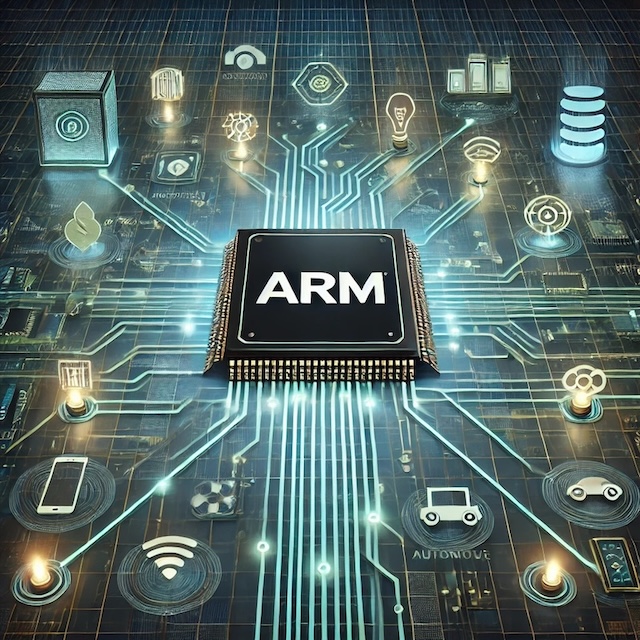
In the rapidly evolving world of technology, the ARM architecture has become a foundational component powering everything from smartphones to smart home devices. But what makes ARM architecture so pivotal, and how does it influence our daily lives? In this blog, we’ll delve into the intricacies of ARM architecture, its benefits, and its far-reaching impact on the modern world.
What is ARM Architecture?
ARM (Advanced RISC Machine) is a family of Reduced Instruction Set Computing (RISC) architectures for computer processors. Unlike Complex Instruction Set Computing (CISC) architectures such as x86, ARM focuses on a simplified set of instructions that are executed with high efficiency. This design approach makes ARM processors highly energy-efficient and versatile.
Key Features of ARM Architecture
- RISC Design Philosophy:
- Uses a simplified set of instructions, reducing complexity and improving efficiency.
- Energy Efficiency:
- Designed to minimize power consumption, making it ideal for battery-powered devices.
- Scalability:
- Suitable for a wide range of devices, from embedded systems to high-performance servers.
- 32-bit and 64-bit Support:
- Offers compatibility with both 32-bit and 64-bit processing to meet diverse computational needs.
- Licensing Model:
- ARM Holdings licenses its designs to manufacturers, enabling customization and innovation by companies like Apple, Qualcomm, and Samsung.
Applications of ARM Architecture
ARM’s versatility has led to its adoption in numerous domains, transforming how we interact with technology daily.
1. Smartphones and Tablets
ARM processors dominate the mobile device market, with nearly every smartphone and tablet relying on ARM-based chips. These processors power operating systems like Android and iOS, enabling features such as multitasking, gaming, and high-resolution displays while preserving battery life.
Examples:
- Apple’s A-series and M-series chips.
- Qualcomm Snapdragon processors.
- Samsung Exynos processors.
Impact:
- Extended battery life for on-the-go usage.
- High-performance mobile computing for gaming, streaming, and productivity apps.
2. Internet of Things (IoT)
The energy efficiency of ARM architecture makes it ideal for IoT devices, where low power consumption is critical. ARM-based chips are found in smart thermostats, wearable fitness trackers, and connected appliances.
Examples:
- ARM Cortex-M series for embedded systems.
- WearOS devices powered by ARM processors.
Impact:
- Smarter homes with connected devices that communicate seamlessly.
- Increased convenience and automation in daily tasks.
3. Automotive Industry
Modern vehicles rely on ARM-based processors for infotainment systems, advanced driver-assistance systems (ADAS), and in-car connectivity. These processors enable real-time data processing for navigation, safety, and entertainment features.
Examples:
- NVIDIA DRIVE platform for autonomous vehicles.
- ARM-based chips in Tesla and other smart cars.
Impact:
- Safer and more connected driving experiences.
- Enhanced navigation and entertainment on the road.
4. Consumer Electronics
ARM processors are integral to devices like smart TVs, gaming consoles, and streaming devices. Their efficiency ensures smooth performance and energy savings.
Examples:
- ARM-powered Roku and Amazon Fire TV.
- PlayStation and Xbox controllers.
Impact:
- Improved entertainment experiences with faster streaming and interactive gaming.
- Reduced energy consumption for sustainable usage.
5. Cloud Computing and Servers
Recent advancements have positioned ARM as a strong contender in the server market. ARM-based processors like AWS Graviton are designed for cloud workloads, offering cost-effective and energy-efficient solutions for data centers.
Examples:
- AWS Graviton processors.
- Ampere Altra ARM-based servers.
Impact:
- Lower operational costs for cloud providers.
- Sustainable computing with reduced carbon footprints.
6. Healthcare Devices
Medical devices like portable diagnostic tools, glucose monitors, and wearable health trackers rely on ARM processors for real-time data analysis and connectivity.
Examples:
- Fitness trackers like Fitbit.
- Portable ultrasound machines.
Impact:
- Enhanced accessibility to medical diagnostics.
- Improved personal health management.
Advantages of ARM Architecture
- Energy Efficiency:
- Crucial for mobile and IoT devices where battery life is paramount.
- Cost-Effectiveness:
- ARM’s licensing model reduces R&D costs for manufacturers.
- Performance:
- Offers high performance per watt, making it suitable for diverse applications.
- Customizability:
- Companies can customize ARM designs to optimize performance for specific use cases.
- Ecosystem Support:
- Broad support for ARM-based software, including compilers, libraries, and development tools.
How ARM Impacts Daily Life
ARM architecture has revolutionized how we interact with technology. From the smartphones in our pockets to the smart devices in our homes, ARM processors enable seamless and energy-efficient experiences. Key areas of impact include:
- Convenience:
- ARM powers devices that simplify everyday tasks, from adjusting room temperature to tracking fitness goals.
- Accessibility:
- Affordable ARM-based devices make technology accessible to a broader audience.
- Sustainability:
- Energy-efficient ARM processors contribute to lower power consumption and greener technology.
- Innovation:
- ARM’s flexibility encourages innovation across industries, driving the creation of smarter, more connected solutions.
Future of ARM Architecture
As technology evolves, ARM continues to innovate, with a focus on enhancing performance, energy efficiency, and scalability. Emerging trends include:
- AI and Machine Learning:
- ARM processors optimized for AI workloads, such as the ARM Cortex-A78C.
- 5G Connectivity:
- Enabling faster and more reliable connections for mobile and IoT devices.
- Edge Computing:
- Bringing computational power closer to the source of data for real-time processing.
- Sustainability:
- Driving eco-friendly computing solutions for a greener future.
Conclusion
ARM architecture is a cornerstone of modern technology, empowering devices that shape our daily lives. Its energy efficiency, scalability, and versatility make it a go-to solution for industries ranging from mobile computing to healthcare. As ARM continues to drive innovation, its impact will only grow, paving the way for smarter, more sustainable technology. Whether you’re a developer, tech enthusiast, or everyday user, ARM’s influence is all around us—powering the future, one device at a time.
Good job!